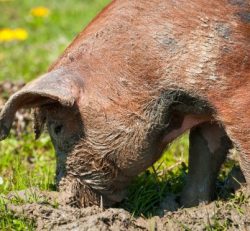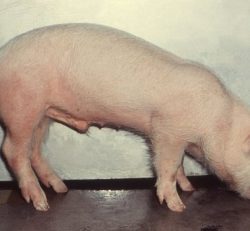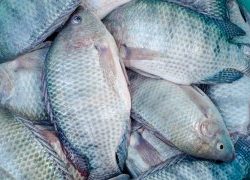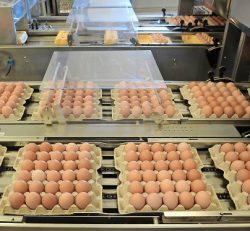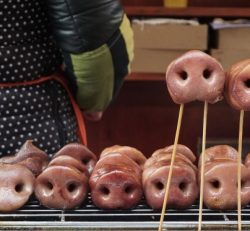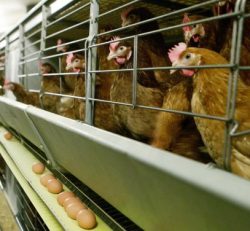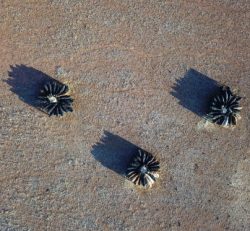TIPS AND TRICKS FOR MOVING PIGS AROUND
Pigs on the move inside the farm – it’s a poorly covered topic in textbooks according to swine management expert John Gadd. He has some practical tips as to what to do – and what not.
Strange, isn’t it, that one of the commonest jobs on the pig farm – moving them – is covered poorly in the textbooks, while that of transporting them during the shipping process has received ample attention by researchers Grandin, Pedersen, Gonyou, McGlone and others. In this area stress affects meat quality at slaughter and is bad for the processor, the consumer, the pigs themselves and of course the stockpersons.
There is nothing more frustrating than a recalcitrant pig! I first encountered the problems of re-allocating space and comfort for our 1,100 sows 50 years ago, and learned a lot about the logistics of it all. With a farm with that number of sows, each move was a logistical exercise and I learned a lot. So let us have a look at some of the advice obtained for a large unit, which is just as applicable to much smaller ones.
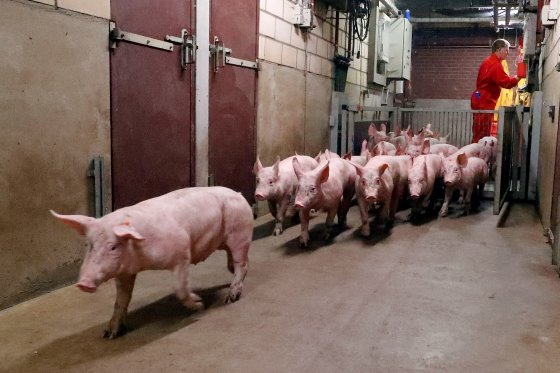
Moving pigs inside a barn can be a frustrating business in case the animals are recalcitrant. Photo: Bert Jansen
Two types of pigs, behaviourally
You don’t need me to tell you that there are two types of pigs genetically. To make handling easier, different techniques are advised.
Nervous pigs
These will be calmed somewhat by daily movement among them. Keep moving at walking pace to accustom such pigs to flow round you and past you. 20 seconds to a minute a day for 50 pigs; not all the time necessarily, but this I found useful for a few days prior to shipping. It helps, too, if the more nervy strains in adjacent pens can see you doing so. Putting-by a little time to do this, and observing as you go, needs to be part of our stockmanship skills these days. And with the growing trend for keeping sows in groups – is now essential.
Docile pigs
In contrast one should not spend too much time in among such pigs, as this could make them so tame that they resent being driven. Inspect them over the pen wall as far as possible, entering when a closer look is deemed advisable.
Some advice from the pig barn
Alleyways should be at least 1 metre wide. This allows two pigs to walk side by side. No pig chooses to be the leader when entering new surroundings. But 2 pigs together give each other confidence and some competition in curiosity, as if one alone is allowed to be curious this will hold things up.
If the passage is narrower than this, don’t over-crowd, and three pigs at a time is best. But big units will laugh at this, not surprisingly. Try not to stockpile pigs in an aisle well before driving – this really gets them stirred-up/nervous that something is about to happen. Calm pigs are easier travellers.
Drafting and sorting
Keep things calm, move slowly, never use electric prods, or slap with sticks, shout and bang gates. Stirred-up pigs will stick together for comfort and be more difficult to separate. The sorting board remains the simplest and best device when pigs have to be sorted or just moved, as was shown in research by John McGlone.
When exiting a building, pigs do not like air blowing on to their faces, so stop the ventilation for a while or pressurise the system so that the airflow rides with them. Pigs are hesitant to exit a barn from a dark surface across a distinctly lighter one – such as a narrow threshold bar or a puddle reflecting light. Conversely, entering a building causes hesitancy in most animals; pigs especially don’t like entering an obscured area, so always light the entrance room well – this was shown in research by Temple Grandin.
Natural reluctance of pigs to leave a familiar environment
To avoid that natural reluctance in pigs forced to leave a familiar environment, attach a temporary 5 m of stout plywood to the pens near the door. This will prevent the pigs’ desire to ‘fraternise’ on their way out and hold things up.
Avoid having anyone visible ahead of the batch, such as a truck driver ‘being helpful’ and standing by the vehicle ramp. He is a distraction and can even be considered by the pigs as a threat. In fact he is a biosecurity risk and should stay in the cab, as you don’t know where he has been beforehand.
Next time I shall provide some diagrams which reduce and can even eliminate ‘jamming’ at the loading/ treatment ramps.
John Gadd
Topic: Pig Management
Source: www.pigprogress.net


